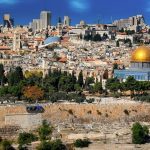Convivencia and its Discontents: Interfaith Life in Al-Andalus
Anna Akasoy
Extract
Historians of Europe often declare that Spain is “different.” This distinctiveness of the Iberian peninsula has many faces and is frequently seen as rooted in its Islamic past. In the field of Islamic history, too, al-Andalus is somewhat different. It has its own specialists, research traditions, controversies, and trends. One of the salient features of historical studies of al-Andalus as well as of its popular image is the great interest in its interreligious dimension. In 2002, María Rosa Menocal published The Ornament of the World, one of the rare books on Islamic history written by an academic that enjoyed and still enjoys a tremendous popularity among nonspecialist readers. The book surveys intersections of Islamic, Jewish, and Christian elite culture, mostly in Arabic, Hebrew, and Latin literature and in architecture, from the Muslim conquest of the Iberian peninsula in 711 to the fall of Granada in 1492. Menocal presents the religious diversity commonly referred to as convivencia as one of the defining features of Andalusi intellectual and artistic productivity. She also argues that the narrow-minded forces that brought about its end were external, pointing to the Almoravids and Almohads from North Africa and Christians from north of the peninsula as responsible. The book’s subtitle, How Muslims, Jews, and Christians Created a Culture of Tolerance in Medieval Spain, conjures the community of Abrahamic faiths. It reflects the optimism of those who identify in Andalusi history a model for a constructive relationship between “Islam” and “the West” that in the age of the “war on terror” many are desperate to find.
Review Article
Information: International Journal of Middle East Studies , Volume 42 , Issue 3 , August 2010 , pp. 489 – 499



